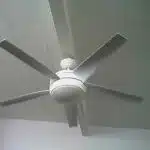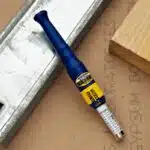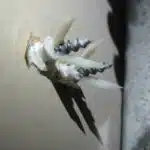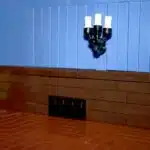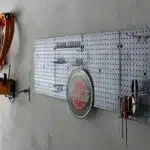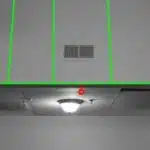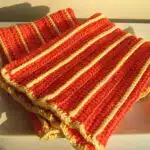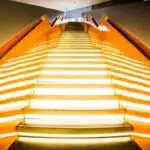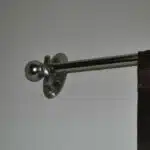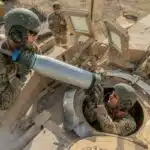Mounting a TV on a wall can be a great way to save space and create a sleek, modern look in your living room or bedroom. However, without the proper tools and knowledge, it can also be a daunting task. As an expert in television mounting, I am here to guide you through the process step-by-step and ensure that your TV is securely mounted for optimal viewing pleasure.
Before beginning the installation process, it is important to carefully consider where you want your TV mounted and what type of wall you will be mounting it on. Different walls require different types of anchors and hardware, so it is essential to choose the right materials for your specific situation. Additionally, measuring and leveling are crucial steps in ensuring that your TV is mounted correctly and safely. By following these guidelines and taking the necessary precautions, you can confidently mount your TV on the wall and enjoy all of its benefits with ease.
Tools And Materials Needed For Tv Wall Mounting
TV wall mounting is a task that requires the right tools and equipment to ensure safe and secure installation. Before starting, it is important to gather all the necessary materials such as a drill, level, stud finder, screws, brackets, and a measuring tape. It is also recommended to have a helper present during the installation process.
In addition to having the proper tools and equipment, taking safety precautions is crucial when mounting a TV on the wall. Make sure to turn off any electrical outlets that may be behind the wall before drilling. Always wear protective gear such as goggles and gloves while working with power tools. It is also important to avoid mounting your TV above a fireplace or in an area where it can be easily knocked over by children or pets.
By following these guidelines for tools and equipment as well as safety precautions, you can ensure that your TV mount will hold securely on the wall for years to come. Next, we will discuss how to choose the right wall for your TV mount based on factors such as room layout and viewing angle.
Choosing The Right Wall For Your Tv Mount
After gathering all the necessary tools and materials, the next step in mounting your TV on a wall is to choose the right type of wall for your mount. This is an important consideration because different wall types have varying degrees of strength and weight capacity limitations. For instance, drywall is a common type of wall found in most homes. While it can hold lightweight mounts, it’s not ideal for heavy-duty installations due to its limited weight capacity.
Another type of wall that you might encounter is concrete or masonry walls, which are much stronger than drywall. These walls can support heavier mounts without any issues. However, drilling into these walls requires more effort since they’re made of denser material. You will need specialized drill bits and screws designed for concrete or masonry walls.
When choosing the right wall for your TV mount, be sure to consider its weight capacity limitations as well as the type of mount you’ll be using. Some mounts are designed to distribute the weight evenly across several studs while others rely on a single stud for support. Always follow the manufacturer’s instructions when installing your mount to ensure that it’s safe and secure. In the next section, we’ll look at how to find the studs in your wall for optimal mounting placement.
Finding The Studs In Your Wall
Locating studs is a crucial step in mounting your TV on the wall. Studs provide the necessary support to hold the weight of your TV and prevent it from falling off. The most common method to locate studs is by using a stud finder. A stud finder is an electronic tool that detects changes in density behind your wall, indicating the presence of a stud.
To use a stud finder, turn it on and place it against the wall. Slowly move it horizontally until you hear a beep or see a light indicating the presence of a stud. Mark the spot with masking tape or a pencil. Repeat this process until you have located all the studs in the area where you plan to mount your TV.
If locating studs proves difficult, there are alternative options for wall mounting. One option is to use toggle bolts, which can hold up to 100 pounds each and work well in drywall or plaster walls. Another option is to mount a plywood board onto multiple studs for added support before attaching your TV mount onto the board. However, keep in mind that these alternatives may not be as secure as mounting directly into studs.
Now that you have located all of the studs or considered alternative options, you can proceed with marking and measuring for your TV mount placement. This step ensures that your TV will be level and centered on the wall once mounted, creating an optimal viewing experience.
Marking And Measuring For Your Tv Mount
When it comes to mounting a TV on the wall, one of the most crucial steps is marking and measuring. Without measuring accuracy, you may end up with a crooked or tilted TV that affects your viewing experience. To avoid this common mistake, take your time and use the right tools to ensure that you get everything right.
Firstly, mark the location where you want to mount your TV using a pencil. Ensure that you choose a spot that offers optimal viewing angles and doesn’t strain your neck or eyes. Next, measure the distance between the top of your TV bracket and its bottom edge. This measurement will help you determine how high to mount the bracket on the wall so that it is at eye level when seated.
One of the most common mistakes people make when mounting their TVs is not taking into account any existing obstructions or uneven surfaces on their walls. As an expert in this field, I strongly advise against ignoring these factors as they can affect both the stability of your mount and your overall viewing experience. Make sure to check for any obstacles like light switches or electrical outlets before drilling holes in your wall. With careful preparation and attention to detail, you’ll be able to achieve perfect results every time.
Moving onto preparing the wall for tv mounting, it’s important to have all the necessary tools before starting this process. By following these steps carefully, not only will you be able to ensure a stable hold for your TV but also create an aesthetically pleasing look that enhances your room’s decor.
Preparing The Wall For Tv Mounting
Before mounting your TV on the wall, it’s important to prepare the wall by cleaning and patching any imperfections. Start by removing any dust or debris from the area where you plan to mount the TV. Use a damp cloth to wipe down the wall and make sure it’s completely clean.
Next, inspect the wall for any holes, cracks, or other damage that could affect your TV mount. If you find any imperfections, patch them up with spackle or drywall compound. Allow the compound to dry completely before sanding it down and smoothing out any rough spots.
Finally, consider choosing the right paint for your wall before mounting your TV. A flat paint finish is best for reducing glare and creating an even surface for mounting. Avoid glossy paints or textured surfaces that could make it difficult to attach your mount securely. By following these simple steps, you can ensure that your wall is properly prepared for a safe and secure TV mount installation.
As you can see, preparing your wall is an essential step in mounting a TV safely and securely. Once you’ve cleaned and patched any damage, consider choosing a flat paint finish to provide an even surface for attaching your mount. In our next section, we’ll cover how to attach the TV mounting bracket to the wall using proper tools and techniques for a successful installation.
Attaching The Tv Mounting Bracket To The Wall
After ensuring that the wall is ready for TV mounting, it’s time to attach the TV mounting bracket. This step is crucial in ensuring a secure and stable installation. One of the most important things to consider when attaching the bracket to the wall is using anchors. Anchors provide extra support and stability for your TV, especially if you’re mounting it on drywall.
Using anchors for TV mounting involves drilling holes into the wall and inserting them before screwing in the bracket. It’s important to use the right size and type of anchor based on your wall material and the weight of your TV. If you’re unsure about which anchors to use, consult a professional TV installation service.
Professional TV installation services can also help ensure that your bracket is properly attached to the wall, eliminating any risk of damage or accidents. They have the expertise and tools needed to install a variety of brackets, including tilting, full-motion, and fixed mounts. With their help, you can enjoy your new TV without worrying about its safety or stability.
Moving on from attaching the TV mount bracket to the wall, we now come to attaching it onto your TV set. This next step requires careful attention as it determines how securely your television will be mounted.
Attaching The Tv Mounting Plate To Your Tv
Attaching the TV mounting plate to your TV is an important step in securing your television on the wall. Proper positioning of the mount is essential for optimal viewing experience, and it’s best to consult your manufacturer’s instructions for guidance. Once you have established the correct position, mark the spot where you will attach the TV mount to your TV.
Weight distribution is another key aspect to keep in mind when attaching the mounting plate. Be sure that your mount can handle the weight of your TV before installation. If you’re unsure about this, consult with a professional or refer to the manufacturer’s instructions. Improper weight distribution can cause damage to both your TV and your wall.
When attaching the mounting plate, ensure that all screws and bolts are tightly fastened. Loose screws or bolts can cause instability, which can be hazardous for both you and your family members. Double-check all connections before finalizing installation to avoid any accidents or mishaps.
Transition: Now that you have successfully attached the mounting plate, it’s time to move on to connecting cables and wires for a seamless and tidy setup.
Connecting Your Cables And Wires
After attaching the mounting plate to your TV, it’s time to focus on connecting your cables and wires. Wire organization and cable management techniques are crucial for a clean and professional-looking installation. Messy wires can be an eyesore and potentially hazardous if not properly secured.
To ensure wire organization, start by identifying where each cable will run. Determine the best route for each wire and make sure they don’t cross or overlap. Use zip ties or cable clips to secure the wires along their designated path. This will prevent them from dangling and tangling, making it easier to connect everything once your TV is mounted.
Another useful technique for cable management is using a cord cover. Cord covers come in various sizes and colors to match your wall color, allowing you to conceal cables that run along the wall. They’re easy to install and can provide a clean finish to your wall-mounted TV setup. By implementing these wire organization and cable management techniques, you’ll achieve a polished look that is both aesthetically pleasing and safe.
Now that you have organized all of your cables, it’s time to lift and secure your TV onto the wall mounting bracket. This step requires precision as you want to avoid any mishaps during lifting or securing your TV onto the bracket mount. Make sure you have someone assisting you during this process as TVs are heavy objects that require two sets of hands during installation. Once the TV is lifted onto the bracket mount, align it with the holes on the bracket mount before securing it in place with screws provided in the mounting kit. Following these steps will help ensure a successful installation of your wall-mounted TV while keeping safety top-of-mind.
Lifting And Securing Your Tv To The Wall Mounting Bracket
Now that you have chosen the right bracket for your TV, it’s time to lift and secure it onto the wall mounting bracket. Make sure you have at least two people to help with this process, as lifting a TV alone can be dangerous. Always follow safety precautions, such as wearing gloves and using proper lifting techniques.
Before lifting your TV onto the wall mounting bracket, make sure that all cables are securely attached and not tangled. This will prevent any accidental disconnections or damage to your equipment. Once everything is in order, lift the TV onto the wall mount and attach it securely using the bolts provided in the kit. Tighten them with a wrench until they are snug, but not overly tight.
Safety Precautions are crucial when lifting and securing your TV to a wall mounting bracket. Always ensure that your ladder is stable and secure before climbing up it. Also, make sure that all tools used during installation are put away safely after use. Finally, do not forget to test the security of your newly installed TV by giving it a gentle tug or shake before walking away from it.
Now that you have lifted and secured your TV onto the wall mounting bracket while following safety precautions, it’s time to adjust it for optimal viewing angle. This final step will ensure that you get maximum enjoyment out of your new setup.
Adjusting Your Tv For Optimal Viewing Angle
Imagine you are sitting in a movie theater. The screen is enormous, and the sound is all around you. You can see everything perfectly without straining your neck or eyes. Now, imagine that same experience in your living room. That’s what we’re aiming for when adjusting your TV for optimal viewing angle.
TV placement is crucial when it comes to creating an immersive viewing experience. You want to make sure the TV is mounted at eye level so that you don’t have to strain your neck or eyes. This means considering furniture arrangement and where people will be seated. If you have a large sectional sofa, consider mounting the TV higher so that everyone can see comfortably.
Once you’ve determined the perfect height for your TV, it’s time to adjust the angle. Tilt the TV downward slightly so that you can see the entire screen without any glare or reflections from windows or lights in the room. This will ensure that everyone has an unobstructed view of their favorite shows and movies. With these adjustments made, sit back and enjoy the show!
To ensure safety and security, it’s important to test the stability of your tv mount before leaving it unattended. In our next section, we’ll go over how to check for proper installation and make sure everything is secure before settling in for a binge-watching session.
Testing The Stability And Security Of Your Tv Mount
Once your TV mount is securely attached to the wall, it’s important to test its stability and security before attaching your television. This step is crucial for ensuring that your television won’t fall or become damaged. Stress testing the mount involves applying pressure to different parts of the mount to see if it can withstand the weight of your TV.
To begin stress testing, make sure that all screws and bolts are tightened securely. Then, press down firmly on different parts of the mount to ensure that it doesn’t wobble or move. You should also try pulling on the mount in different directions to check for any weakness. If you notice any movement or instability during stress testing, immediately take down the mount and review installation instructions.
Safety precautions must be taken when stress testing a TV mount. Never attempt to lift or hold up a heavy TV by yourself, always have someone else nearby to assist you if necessary. Additionally, ensure that you have proper equipment such as gloves and safety glasses before beginning this process.
- Start by placing a level on top of the mounted bracket.
- Next, use a stud finder to locate the studs behind your wall.
- Lastly, double-check each screw and bolt for tightness.
Remember that these steps are critical for ensuring that your television will remain safe and secure while mounted on your wall.
Moving on from stress testing your TV mount, let’s now explore some common troubleshooting issues you may encounter while mounting your television on a wall.
Troubleshooting Common Tv Wall Mounting Issues
Have you encountered some common issues while mounting your TV on the wall? Not to worry, as these problems can be easily resolved with a few troubleshooting techniques. One of the most common issues is when the mount is not level, causing the TV to tilt or even fall off. To fix this issue, use a level tool to ensure that both the mount and the TV are perfectly straight.
Another issue that may arise is when the mount cannot support the weight of your TV. This can result in a sagging or wobbly TV, which can be dangerous and difficult to watch. To fix this issue, make sure to carefully read and follow the weight limit specifications provided by your mount manufacturer. If you have exceeded this limit, it may be necessary to purchase a stronger mount.
Lastly, an issue that may arise during installation is when there are no studs or other sturdy structures behind the wall where you want to install your mount. In this case, using drywall anchors alone may not provide enough support for your TV. Instead, consider hiring a professional installer who can assess and reinforce the area where you want to hang your TV.
Now that we have addressed some common issues during mounting your TV on the wall, let’s move on to removing your TV from its wall mount.
Removing Your Tv From The Wall Mount
If you have successfully mounted your TV on the wall, it is equally important to know how to remove it safely. Removing the TV mount requires patience and precision, as any mistakes can lead to damage to both the mount and the television. In this section, we will discuss some common mistakes that people make while removing their TV from the wall mount.
One of the most common mistakes that people make while removing their TV mount is not following proper safety precautions. Before attempting to remove your TV from the wall, ensure that all power sources are turned off and unplugged. Additionally, use a sturdy ladder or step stool if needed to access the mounting bracket securely.
Another mistake is not having the proper tools for removing the TV mount. Make sure you have a screwdriver or drill with appropriate bits for removing screws or bolts holding your TV in place. It is also essential to follow manufacturer instructions specific to your mount model carefully. If you do not have access to these instructions, you can find them online.
In summary, removing your TV from its wall mount requires adherence to critical safety protocols and attention to detail when handling tools and equipment. By avoiding common mistakes such as neglecting safety measures or using improper tools, you can successfully remove your television without incurring any damages. In our next section, we will explore tips for maintaining your tv wall mount for longevity.
Maintaining Your Tv Wall Mount For Longevity
While it may seem like mounting your TV on the wall is a one-time task, it is important to maintain the mount for longevity. One common misconception is that once you have mounted your TV, there is no need for further attention. However, just like any other household item or appliance, a TV wall mount requires regular cleaning and maintenance.
Cleaning tips are crucial to maintaining your TV wall mount, as dirt and dust can accumulate over time and cause damage. To clean your mount, start by dusting it with a soft cloth or brush. Avoid using harsh chemicals or abrasive materials, as these could scratch or damage the mount’s surface. Additionally, regularly wiping down the TV itself with a microfiber cloth can prevent dust buildup on the mount.
In order to ensure that your TV wall mount lasts for years to come, it is important to establish a maintenance schedule. This schedule should include regular inspections of the mount’s hardware and connections to ensure they are secure and functioning properly. Additionally, if any issues arise with your mounted TV – such as wobbling or loose screws – address them immediately in order to prevent further damage.
Moving forward with maintaining your TV wall mount can be simple with these cleaning tips and establishing a maintenance schedule. However, there are additional tips and tricks that can help ensure success in mounting your TV on the wall.
Additional Tips And Tricks For Tv Wall Mounting Success
Having a TV mounted on a wall is a great way to save space and create an immersive viewing experience. However, many people make common mistakes when mounting their TVs that can compromise safety and functionality. To avoid these issues, it is important to choose quality materials and follow proper installation procedures.
One mistake that people often make is using cheap or unreliable mounting hardware. This can lead to the TV falling off the wall or becoming unstable over time. To ensure safety and longevity, it is recommended to invest in high-quality hardware from trusted brands such as Sanus, Vogel’s, and OmniMount.
In addition to choosing the right hardware, there are alternative mounting options that can be considered for aesthetic purposes. For example, a recessed mount can create a sleeker look by hiding the TV within the wall. It is also important to consider cable management solutions to keep cords organized and out of sight. By taking these factors into account, you can achieve a TV wall mount that not only looks great but also functions properly for years to come.
Conclusion
TV wall mounting can be a daunting task, but with the right tools and materials, it can be done easily. When choosing the right wall for your TV mount, consider the weight of your TV and the structure of your wall. Finding studs in your wall is crucial to ensure that your TV is securely mounted. Marking and measuring accurately will save you time and effort later on.
Preparing the wall for TV mounting requires drilling holes and attaching brackets to the studs. Make sure to troubleshoot common issues such as uneven leveling or unstable mounts before finishing up. Removing your TV from the wall mount should be done carefully to avoid any damage. Lastly, maintaining your TV wall mount will ensure its longevity.
In conclusion, mounting a TV on a wall can enhance your viewing experience while saving space in your home. Remember to choose the right wall, find studs accurately, prepare the wall properly, troubleshoot common issues effectively, remove your TV carefully, and maintain your mount regularly. With these tips and tricks from an expert television mounting professional, you can successfully mount your TV on a wall with ease. So why not take advantage of this valuable opportunity?
Image Credits
- “TV on the wall” by TenSafeFrogs (featured)







